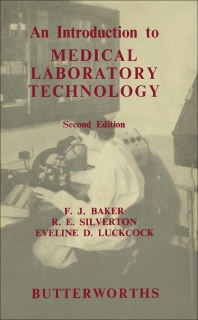Books in Life sciences
Books in Life sciences
- 2nd Edition
- May 12, 2014
- Geoffrey A. Taylor
- English
- Paperback9 7 8 0 4 3 3 3 2 1 5 0 7
- eBook9 7 8 1 4 8 3 1 8 3 0 2 2

Bacteriology for Nurses
- 1st Edition
- May 12, 2014
- G. F. Walker
- English
- Paperback9 7 8 1 4 8 3 2 1 3 6 9 9
- eBook9 7 8 1 4 8 3 2 2 7 1 2 2

The Status of Enzymes and Hormones in Therapy
- 3rd Edition
- May 12, 2014
- J. L. Turk
- English
- Paperback9 7 8 0 4 3 3 3 2 8 5 2 0
- eBook9 7 8 1 4 8 3 1 8 3 0 3 9

Immunology in Clinical Medicine
- 1st Edition
- May 12, 2014
- Mary Dawson + 1 more
- J. B. Stenlake
- English
- Paperback9 7 8 1 4 8 3 1 8 0 3 0 4
- eBook9 7 8 1 4 8 3 1 9 6 1 1 4

Immunological and Blood Products
- 3rd Edition
- May 12, 2014
- N. A. Simmons
- English
- Paperback9 7 8 0 4 3 3 3 0 3 0 1 5
- eBook9 7 8 1 4 8 3 1 8 3 0 1 5

An Introduction to Microbiology for Nurses
- 1st Edition
- May 12, 2014
- John Emery
- English
- Paperback9 7 8 1 4 8 3 2 4 9 1 7 9
- eBook9 7 8 1 4 8 3 2 8 0 0 1 1

The Anatomy of the Developing Lung
- 2nd Edition
- May 12, 2014
- William Robert Fearon
- English
- eBook9 7 8 1 4 8 3 2 2 5 3 9 5

An Introduction to Biochemistry
- 1st Edition
- May 12, 2014
- F. J. Baker + 2 more
- English
- Paperback9 7 8 1 4 8 3 1 7 9 6 0 5
- eBook9 7 8 1 4 8 3 1 9 5 4 1 4

An Introduction to Medical Laboratory Technology
- 1st Edition
- May 12, 2014
- R. J. M. Fry + 2 more
- English
- Paperback9 7 8 1 4 8 3 2 1 0 2 3 0
- eBook9 7 8 1 4 8 3 2 2 3 6 6 7

Normal and Malignant Cell Growth
- 1st Edition
- May 12, 2014
- T. W. Goodwin
- English
- Paperback9 7 8 1 4 8 3 1 7 8 1 6 5
- eBook9 7 8 1 4 8 3 1 9 3 9 7 7

Biochemistry of Lipids